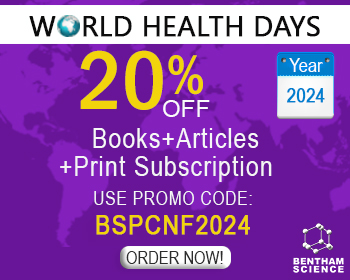Abstract
Background: Although fluoxetine and, in the USA, escitalopram are approved for depression in adolescence, substantial concern surrounds antidepressant use in youth. Major controversies regarding the efficacy and safety (increased suicidality) of antidepressants exist.
Introduction: The category of depression is very broad and overinclusive in terms of etiology, the role of psychosocial adversities severity, episodicity, presentation, and relationship with bipolarity. This heterogeneity, not fully considered in Randomized Controlled Trials (RCTs), may account for the disappointing results with respect to both the efficacy and safety.
Methods: Based on the available literature, we will address the following topics: a) controversies regarding the definition of depression as a unique homogeneous condition with a unique type of pharmacological treatment; b) controversies about the interpretation of data from Randomized Controlled Trials (RCTs) on the efficacy of pharmacological treatments in adolescent depression; c) the interpretation of data regarding the safety of antidepressant treatment in adolescent depression, particularly in terms of increased suicidal risk.
Results: According to RCTs, antidepressants are minimally to moderately more effective than placebo, principally based on very high placebo responses, and only fluoxetine shows more evidence of efficacy. These differences in meta-analyses are sometimes statistically but not clinically significant. Depression is a heterogeneous condition in terms of etiology, the role of psychosocial adversities severity, episodicity, presentation, and relationship with bipolarity. This heterogeneity may partly explain the low drug-placebo difference and the high placebo response (possibly related to a high level of natural recovery of adolescent depression). In the National Institute of Mental Health (NIMH)-funded studies, including a lower number of study sites and more reliable enrollment procedures, lower placebo response rates and greater group differences between medication and placebo were found. Robust evidence supports an increased risk of emergent suicidality after starting antidepressants. A clear age effect on suicidal risk after antidepressants is supported by a comprehensive meta-analysis, showing that suicidal risk increases with decreasing age, being markedly greater in subjects aged between 18 and 25 years. However, the term suicidality is too broad, as it includes suicidal ideation, suicidal attempts, and completed suicide, with a wide range of severity and pervasiveness. If emergent suicidality should be actively and carefully explored, empirical evidence, albeit weak, suggests that combined pharmacotherapy (antidepressant and/or lithium) associated with psychotherapy may be helpful in reducing pretreatment suicidal ideation and suicidal risk.
Conclusion: Moderate to severe depression should be treated with psychotherapy and/or fluoxetine, the bestsupported medication, and treatment-resistant adolescents should always receive combined treatment with psychotherapy. Suicidal ideation, particularly with a plan, should be actively explored before starting an antidepressant, as a reason for the closest monitoring. Emergent suicidality after starting antidepressants, as well as antidepressant-related activation, should also be closely monitored and may lead to antidepressant discontinuation. Although no response to pharmacotherapy and psychotherapy may occur in up to 40% of depressed adolescents, possible predictors or mediators of poorer response in adolescents are uncertain, and only a few studies support possible treatment strategies. Finally, studies exploring the efficacy of antidepressants in specific depression subtypes, i.e., based on prevalent psychopathological dimensions (apathy, withdrawal, impulsivity), are warranted.
Keywords: Depression, adolescence, pharmacotherapy, suicidality, major depressive disorder, psychopathological dimensions.
[http://dx.doi.org/10.1001/archgenpsychiatry.2007.5] [PMID: 18180433]
[http://dx.doi.org/10.1016/j.euroneuro.2016.02.001] [PMID: 26970020]
[http://dx.doi.org/10.1111/j.1399-5618.2008.00639.x] [PMID: 19594510]
[http://dx.doi.org/10.1111/jcpp.12844] [PMID: 29148049]
[http://dx.doi.org/10.1016/j.biopsych.2020.01.012] [PMID: 32171465]
[http://dx.doi.org/10.1176/appi.ajp.2012.12070999] [PMID: 23111466]
[http://dx.doi.org/10.1016/S0140-6736(16)30385-3] [PMID: 27289172]
[http://dx.doi.org/10.1176/appi.ajp.2017.16091059] [PMID: 28253735]
[http://dx.doi.org/10.1001/jama.292.7.807] [PMID: 15315995]
[http://dx.doi.org/10.1371/journal.pmed.0050045] [PMID: 18303940]
[http://dx.doi.org/10.1001/jama.2009.1943] [PMID: 20051569]
[http://dx.doi.org/10.1097/01.chi.0000240838.78984.e2] [PMID: 17135988]
[http://dx.doi.org/10.1192/bjp.bp.115.173906] [PMID: 27198482]
[http://dx.doi.org/10.1111/acps.12886] [PMID: 29611870]
[http://dx.doi.org/10.1016/S2215-0366(19)30216-0] [PMID: 31303567]
[http://dx.doi.org/10.1001/jamapsychiatry.2020.4564] [PMID: 33595620]
[http://dx.doi.org/10.1089/cap.2020.0008] [PMID: 32315537]
[http://dx.doi.org/10.1016/j.brat.2020.103637] [PMID: 32413595]
[http://dx.doi.org/10.1016/j.jaac.2012.01.011] [PMID: 22449646]
[http://dx.doi.org/10.1176/appi.ajp.2011.11020335] [PMID: 22420036]
[http://dx.doi.org/10.1016/j.jaac.2010.11.019] [PMID: 21334569]
[http://dx.doi.org/10.1016/S0140-6736(07)60453-X] [PMID: 17368155]
[http://dx.doi.org/10.1007/s10578-016-0666-z] [PMID: 27349656]
[http://dx.doi.org/10.1176/appi.ajp.2007.05122032] [PMID: 17728419]
[http://dx.doi.org/10.1016/j.jad.2011.12.021] [PMID: 22284022]
[http://dx.doi.org/10.3389/fpsyt.2020.00500] [PMID: 32595530]
[http://dx.doi.org/10.1016/j.jad.2021.03.018] [PMID: 33765539]
[http://dx.doi.org/10.1017/S0033291713001827] [PMID: 23902895]
[http://dx.doi.org/10.1007/s00702-019-02069-x] [PMID: 31456039]
[http://dx.doi.org/10.1016/j.bbi.2019.10.006] [PMID: 31604141]
[http://dx.doi.org/10.1038/s41398-020-0787-9] [PMID: 32312958]
[http://dx.doi.org/10.1038/s41386-020-00871-w] [PMID: 33007777]
[http://dx.doi.org/10.1017/S0954579420000012] [PMID: 32381149]
[http://dx.doi.org/10.1089/cap.2019.0015] [PMID: 30939048]
[http://dx.doi.org/10.1016/j.bbi.2019.02.021] [PMID: 30797959]
[PMID: 31511767]
[http://dx.doi.org/10.1016/S2215-0366(20)30137-1] [PMID: 32563306]
[PMID: 34029378]
[http://dx.doi.org/10.1001/jama.297.15.1683] [PMID: 17440145]
[http://dx.doi.org/10.3389/fpsyt.2020.00717] [PMID: 32982805]
[http://dx.doi.org/10.1016/S0140-6736(17)32802-7] [PMID: 29477251]
[http://dx.doi.org/10.1089/cap.2019.0022] [PMID: 31368787]
[http://dx.doi.org/10.1111/j.1399-5618.2009.00728.x] [PMID: 19624387]
[http://dx.doi.org/10.1001/jama.299.8.901] [PMID: 18314433]
[http://dx.doi.org/10.1176/appi.ajp.2008.08020247] [PMID: 19047322]
[http://dx.doi.org/10.1097/01.chi.0000192250.38400.9e] [PMID: 16540812]
[http://dx.doi.org/10.1097/chi.0b013e31802f5f03] [PMID: 17420682]
[http://dx.doi.org/10.1007/s00787-018-1244-7] [PMID: 30535589]
[http://dx.doi.org/10.1111/jcpp.12940] [PMID: 29939396]
[http://dx.doi.org/10.1080/15622975.2021.1878427] [PMID: 33977870]
[http://dx.doi.org/10.1097/FTD.0000000000000685] [PMID: 32195989]
[http://dx.doi.org/10.1055/a-1302-8108] [PMID: 33291155]
[http://dx.doi.org/10.1016/j.jaac.2015.09.014] [PMID: 26598474]
[http://dx.doi.org/10.1016/j.jaac.2011.04.003] [PMID: 21784297]
[http://dx.doi.org/10.1136/bmj.39224.494340.55] [PMID: 17556431]
[http://dx.doi.org/10.1016/S0140-6736(04)16043-1]
[http://dx.doi.org/10.1001/archpsyc.63.3.332] [PMID: 16520440]
[http://dx.doi.org/10.1136/bmj.b2880] [PMID: 19671933]
[http://dx.doi.org/10.1136/bmj.h4320] [PMID: 26376805]
[http://dx.doi.org/10.1016/S0140-6736(04)16462-3] [PMID: 15207963]
[http://dx.doi.org/10.1176/appi.ajp.2007.07030454] [PMID: 17728420]
[http://dx.doi.org/10.1089/cap.2017.0174] [PMID: 30063169]
[http://dx.doi.org/10.4088/JCP.08m04607] [PMID: 19552869]
[http://dx.doi.org/10.1001/archpsyc.64.10.1132] [PMID: 17909125]
[http://dx.doi.org/10.1097/CHI.0b013e3181b5dbe4] [PMID: 19730274]
[http://dx.doi.org/10.1097/CHI.0b013e3181b5db66] [PMID: 20854770]
[http://dx.doi.org/10.1136/bmj.f3646] [PMID: 23814104]
[http://dx.doi.org/10.1136/ebmental-2019-300102] [PMID: 31248976]
[http://dx.doi.org/10.1002/da.22329] [PMID: 25449861]
[http://dx.doi.org/10.1016/j.cppeds.2017.12.001] [PMID: 29358037]
[http://dx.doi.org/10.1186/s12888-020-02711-z] [PMID: 32546134]
[http://dx.doi.org/10.1176/appi.ajp.2010.09111680] [PMID: 20843873]
[PMID: 12076448]
[http://dx.doi.org/10.1089/cap.2005.15.777] [PMID: 16262594]
[http://dx.doi.org/10.1089/cap.2017.0047] [PMID: 29035574]
[http://dx.doi.org/10.1089/1044546041649110] [PMID: 15319015]
[http://dx.doi.org/10.1186/s13034-020-00316-8] [PMID: 32175006]
[http://dx.doi.org/10.1016/j.jpsychires.2021.02.058] [PMID: 33706168]
[http://dx.doi.org/10.4088/JCP.15r10435] [PMID: 28068462]
[http://dx.doi.org/10.1016/j.jaac.2014.12.012] [PMID: 25721187]
[http://dx.doi.org/10.1016/j.jaac.2017.10.006] [PMID: 29173735]
[http://dx.doi.org/10.1016/j.jaac.2019.06.013] [PMID: 31369795]
[http://dx.doi.org/10.1089/cap.2006.16.159] [PMID: 16553536]
[http://dx.doi.org/10.1097/MD.0000000000021497] [PMID: 32871995]
[http://dx.doi.org/10.1111/j.1755-5949.2009.00106.x] [PMID: 19769598]
[http://dx.doi.org/10.1016/j.euroneuro.2020.01.011] [PMID: 32046933]
[http://dx.doi.org/10.1016/j.bone.2015.04.042] [PMID: 25940460]


























